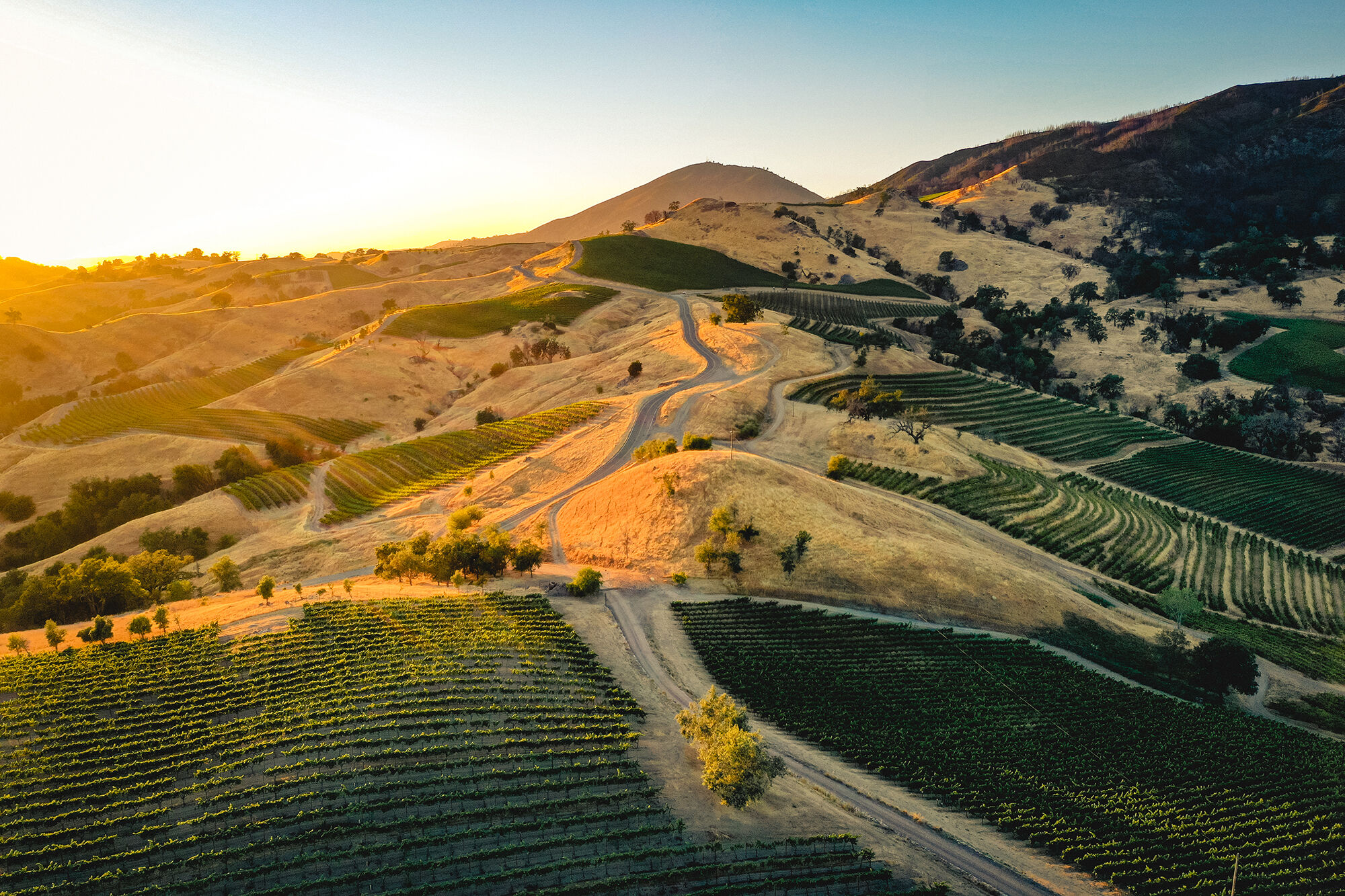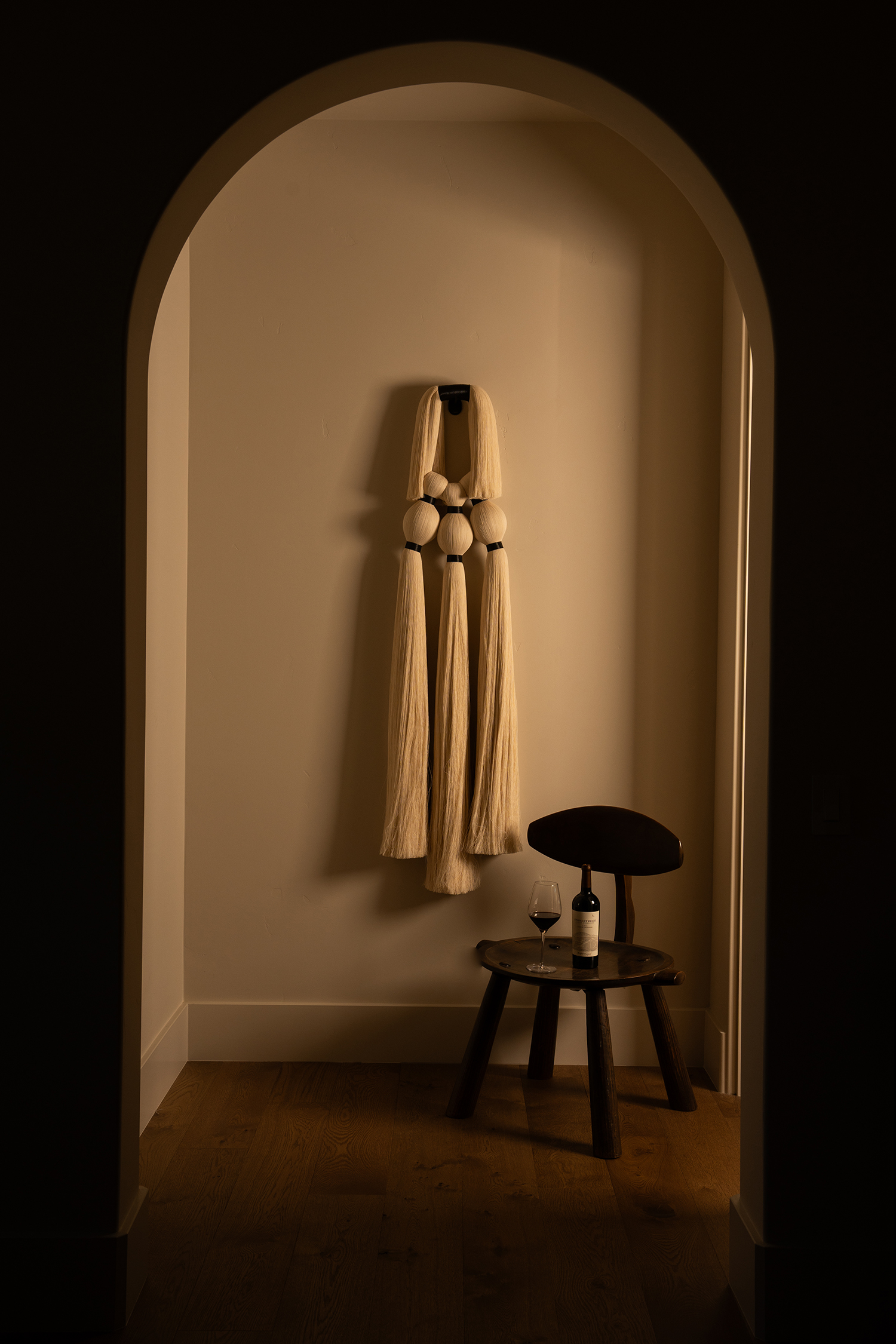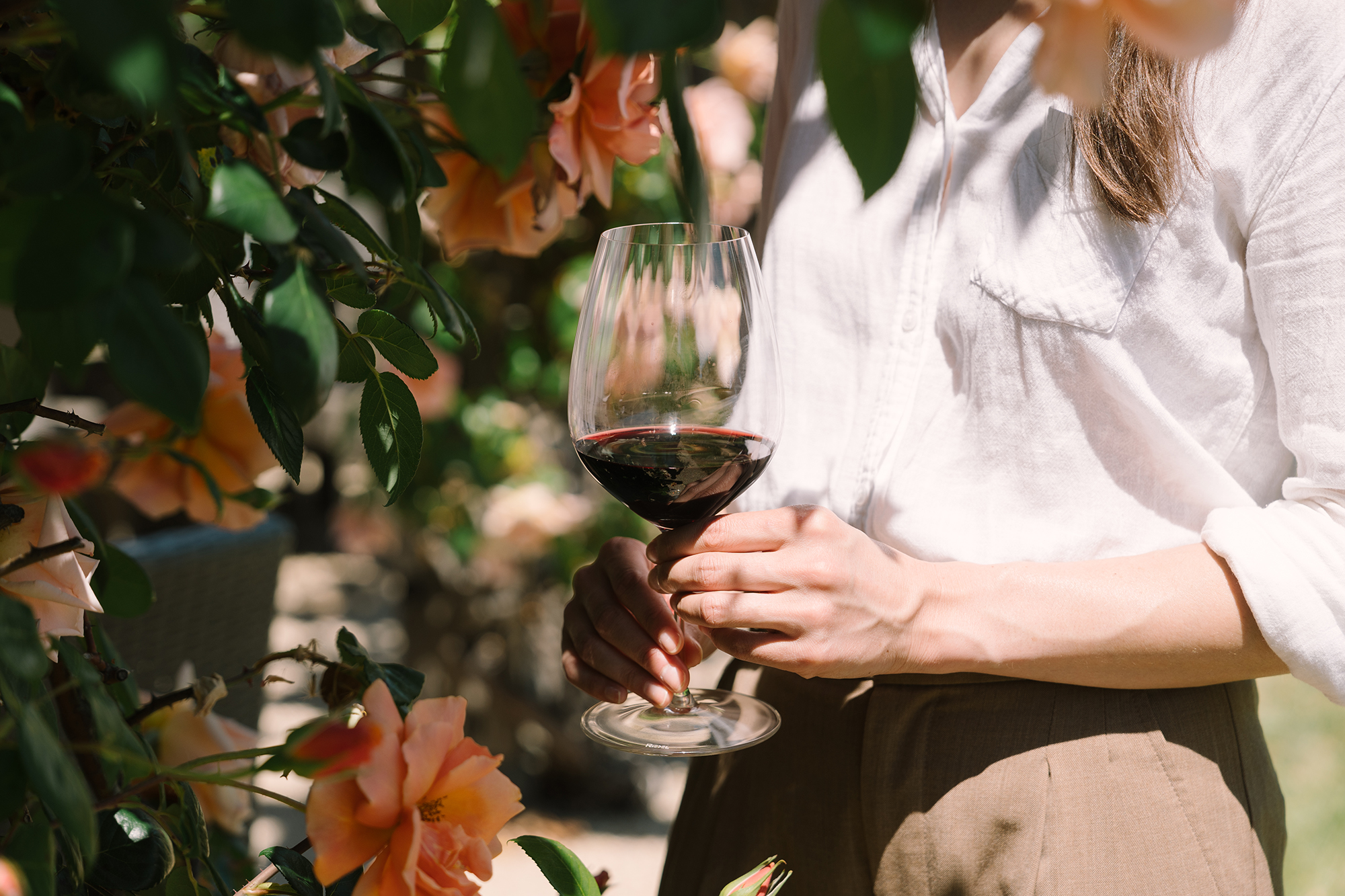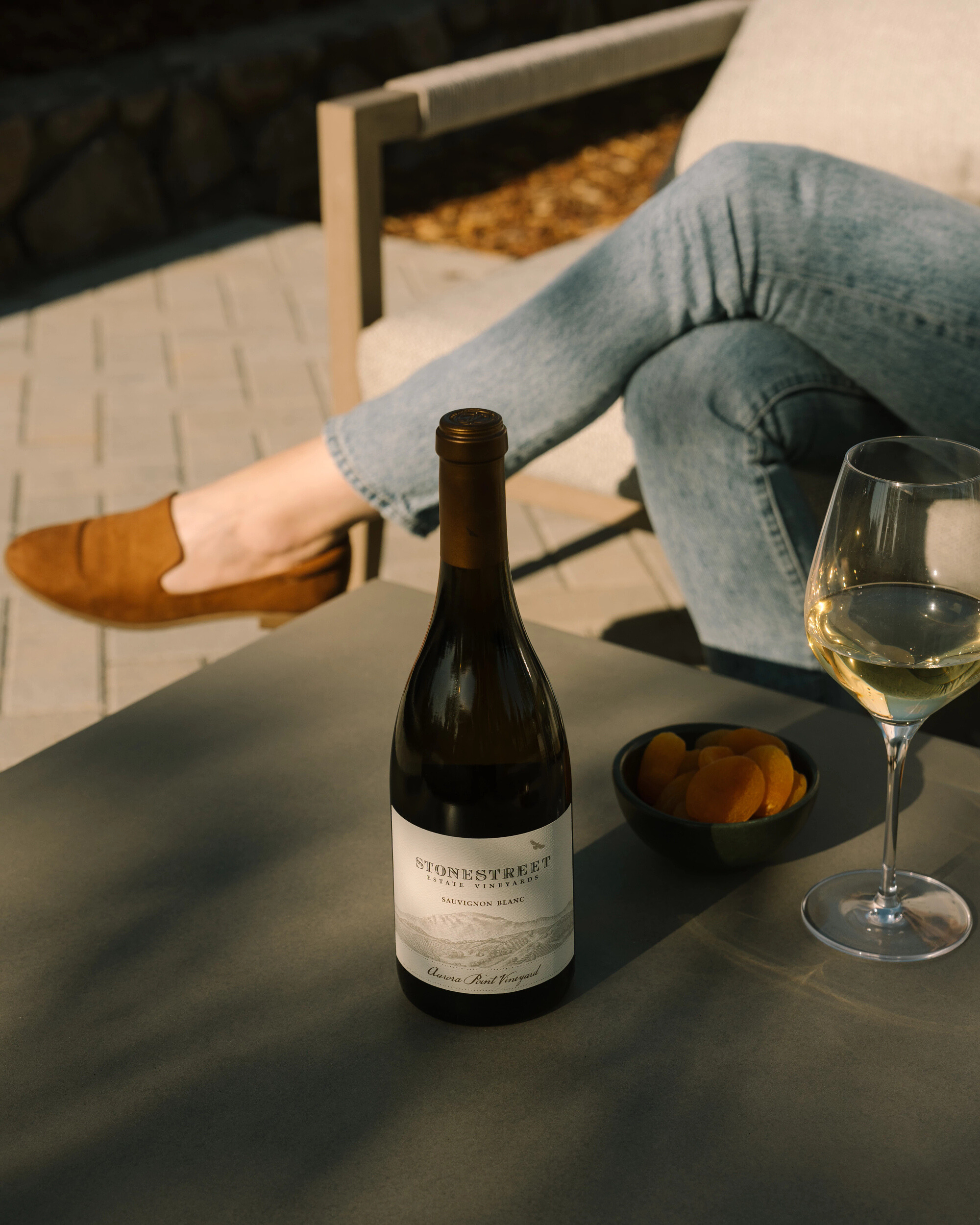How Altitude Affects Winegrowing
What makes grapes grown in vineyards at higher elevations special compared to valley-grown grapes in the same region? It’s a combination of increased solar rays, greater (or sometimes lesser) temperature fluctuations, scarce water resources, dramatic weather patterns, and good old-fashioned steepness.
High-altitude wine is a marvel of adventurous, hands-on farming that results in tremendous character in the glass. The Stonestreet Mountain Estate towers high above Alexander Valley in the Mayacamas Mountain Range, with vineyards ranging from 400 to 2,400 feet in elevation. Our estate holds a dramatic array of mesoclimates, peaks, valleys, and ledges, all influencing the complexity of our wines. High-elevation farming brings challenges, limitations, and advantages that all shape the unique and acclaimed wines of Stonestreet.
Mountain sunlight is different
A wine’s tannin structure and acidity are predominately developed in the vineyard—rather than during the winemaking process—and they are mainly impacted by the vines’ particular exposure to the sun and by the temperature shift the vineyard sees from day to night. As you move upward in elevation, the density and intensity of the solar rays grows. For every 1,000-foot gain in elevation, the level of UV rays increases by 10-12%, which forces the fruit to develop thicker skin, leading to greater color concentration and stronger tannins. Temperatures can also increase with elevation. During the summer and fall, vineyards towards the top of our estate can be up to 20 degrees warmer than those on the valley floor, leading to more concentrated flavor profiles in the fruit.
High-elevation growing areas will often see a greater shift in temperature between day and night. Once the sun sets, temperatures in Alexander Valley drop drastically, but this shift tends to be even more pronounced at altitude. The cooler nights at our high-elevation sites allow the grapes to conserve their acidity, leading to more elegant, age-worthy wines. Cooler nights also help lengthen the growing season, allowing the grapes more time to develop on the vine.
The inversion effect
The inversion layer around the Mayacamas Mountain range, which extends into both Napa and Sonoma County, falls between 1,600 and 1,800 feet in elevation, often resulting in a thick layer of fog below the inversion cap during the early morning. Several of our vineyard sites (mainly Chardonnay) are planted along this elevation line and are influenced by both climate conditions. Because of this, we see differences in flavors between the top and bottom of these micro-parcels—a complexity that shines in the wines they create. Explore our Chardonnays here.
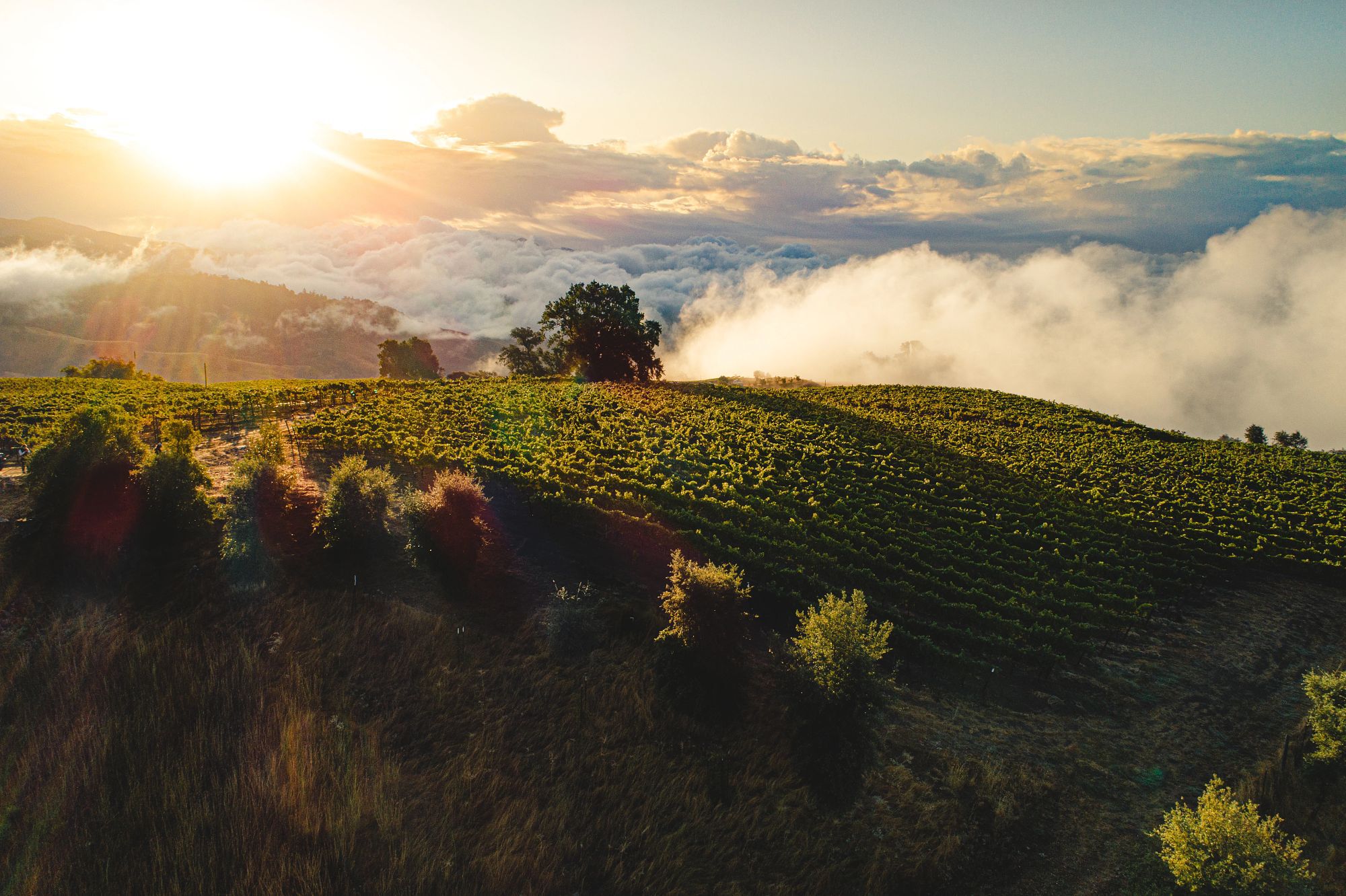
More rain but less water
Higher elevations are prone to more intense weather due to the way the storm systems hit the mountain ranges. Our mountain vineyards tend to see proportionately more rainfall than their valley floor counterparts. However, due to the slopes of our vineyards, that water never has a chance to soak in, thus reducing the amount of moisture that makes it deep into the soil to feed the roots of the vines. This lack of surface water forces the roots to grow deeper in search of moisture, in turn stressing the vines and encouraging them to put more energy into developing fruit rather than full, leafy canopies. Lower moisture also influences the yields of our vineyards (average tons of grapes produced per acre) which leads to fewer grape clusters per vine. This allows existing clusters to develop more fully.
Farming by hand
Due to the steeper slopes and dramatic orientations, we are forced to do everything by hand on our estate. Many vineyard management practices have been mechanized in recent years to streamline the processes, but these machines do not fit down the narrow vineyard rows of Stonestreet and cannot traverse the steep terrain. Instead, we employ an extraordinary 100+ person vineyard team who take great pride in our vines. Though it may require more manual effort, the overall impact we have on the land is reduced, which supports our sustainability efforts. Our gentler approach helps minimize our carbon footprint and leads to higher quality fruit.
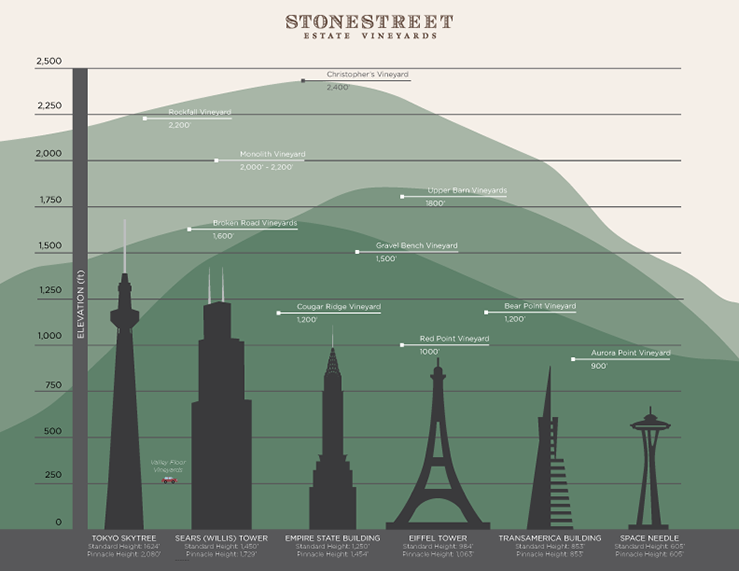
Our skyscraper
Our highest growing site at 2,400 feet elevation is the source of our Christopher’s Vineyard Cabernet Sauvignon. That top end is nearly twice the height of the Empire State Building in New York City. As of this writing, there is only one building in the world that surpasses the height of our mountain estate: the Burj Khalifa in Dubai, United Arab Emirates at 2,717 feet. Our vineyards would tower over many landmarks such as the Tokyo Skytree in Japan and the Eifel Tower in France.
Overall, we see great power and intensity in the wines we produce from our mountain estate. For our Cabernet Sauvignons, we attribute these conditions to their signature robust tannin structure, balanced acidity, and concentrated flavors. For our Chardonnay, the wide range of growing conditions translates to elegant and balanced wines with complex flavors and textures. No two Stonestreet vineyards are alike. Though the farming may be challenging, our vineyard crew and winemaking team gladly tackle it, and because of their dedication we get the best reward possible—beautiful and fascinating wines.

